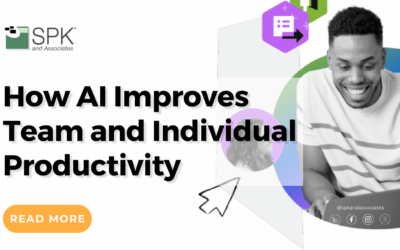In any company, the creation/delivery of the product or service and the sale of it are top of mind for the CEO. This is the lifeblood of the business.
As such, it is critical to have metrics that clearly communicate the health of product creation and release. A CEO (and the executive team) are tasked with driving business growth and ensuring long-term sustainability. They can’t dive deep into the details, so they rely on engineering metrics that provide a clear picture of planning, performance, risk, and opportunities for improvement.
The metrics should tell the executive team when they are on track along the way (and when they are not). In addition to this, metrics should track performance after the project is finished. The right engineering metrics must be both leading and lagging. Leading metrics serve as predictors of success, helping teams stay on track along the way. Lagging metrics, on the other hand, measure the outcomes of past efforts and indicate whether the established targets were met. Both are critical in the engineering space.
The Purpose of Engineering Metrics
Every metric in a company exists to provide insights that guide decision-making and ensure accountability.
Without them, organizations operate in the dark, making decisions based on intuition rather than data. Effective engineering metrics help:
- Plan project and product selection and prioritization
- Optimize engineering operations – efficiency and productivity
- Inspire and guide the engineering team
- Enhance predictability.
With these goals in mind, let’s explore the categories of engineering metrics that matter most to CEOs.
Key Categories of Engineering Metrics
1. Planning: Business Impact Metrics
Again, at the executive level, engineering is ultimately judged by its contribution to business outcomes. The way engineering contributes to the company is by creating and delivering the right products, at the right time, for the right cost. This is no small task!
“Right products” and “right time” are the main concerns in this planning category. The fundamental lagging metrics in this category are straightforward for both product and software:
- Revenue from product
- Customer retention and expansion
Leading metrics for this area can be a bit trickier. However, they are just as important. When the executive team is choosing which projects to prioritize, they are making bets as to where to invest the resources of the company. Some of the bets will pay off, and some will not.
The executive team must look at measurements along the way to determine when to continue and when to shift resources to other projects due to unpromising metrics. The following metrics can help with these decisions:
- Market signal strength – Tracking search trends, early customer feedback, and competitive analysis can indicate whether the product is aligned with current market demands.
- Customer engagement with prototypes (product) or beta releases (software) – Metrics like sign-ups, early adoption, feature requests, and feature adoption, show whether a product is gaining traction before a full launch.
- Development pipeline health – Tracking the velocity and throughput of feature development to ensure product timelines align with market opportunities.
2. Optimizing Engineering Operations: Efficiency and Productivity
Once the CEO is comfortable that the right planning decisions are being made, getting the product or software to market at the right time is critical. Efficiency is a key concern for CEOs, especially in competitive industries where time-to-market can make or break success.
Engineering Operations is an area near and dear to my heart. At SPK, we’ve spent over two decades in this space, finding ways to make the product and software lifecycle more efficient, and the engineers productive and content.
This last statement is quite important. Engineers are both analytical AND creative. Creativity is fostered in a space where inefficiencies are removed, and where creative people are free to focus on creating. If an artist constantly has to interrupt their work addressing issues with their tools or process, creativity is greatly hindered.
This is where productivity metrics can help. Productivity metrics assess how effectively engineering resources are utilized.
The way to determine the right leading and lagging metrics in this category starts with asking the right questions. Each product team is different, possibly desiring different business outcomes.
- What will show us that our product or software development activities are on track and on time?
- What will show us that our engineers are creating productively, not wasting time on non-critical issues?
- What will show us that we are creating the right product, per the requirements set out?
- What will tell us that our resources (time and equipment) are being used efficiently?
Here are some engineering operations metrics to get you started.
Software Development and Release Metrics:
- Cycle time – Measures how long it takes to complete a task from start to finish, helping identify inefficiencies in the development pipeline.
- Deployment frequency – Tracks how often new code is released to production, indicating agility and responsiveness.
- Lead time for changes – The time from code commit to production release, signaling the effectiveness of development and release processes.
- Code churn – Measures how much code is rewritten or modified after being committed, helping assess code stability and efficiency.
Most agile and DevOps teams use the DORA metrics as a starting point. They encompass both leading and lagging metrics. These are a great way to begin.
Product Engineering Metrics:
- Engineering throughput – Measures the number of completed design iterations within a given timeframe, indicating the efficiency of the product development cycle.
- Design-to-prototype time – Tracks the time taken from initial design to a functional prototype, ensuring rapid iteration and development.
- Test coverage for product validation – Measures the percentage of product functionality covered by validation and verification tests, ensuring quality in early development phases (critical for regulated industries).
- Overall Equipment Effectiveness (OEE) – Measures manufacturing productivity by analyzing machine availability, performance, and quality.
- First-pass yield (FPY) – Percentage of units produced correctly without requiring rework, ensuring efficiency in manufacturing.
These are just a few. It’s also important to note that many of the engineering operations applications available today – CAD tools (SolidWorks, Creo), Product Data Management PDM (PTC Windchill, SolidWorks PDM), Product Lifecycle Management PLM (PTC Windchill, Dassault Enovia), Atlassian Jira and Confluence, GitLab, MasterControl, etc. – have built-in reporting that provides best-in-class metrics for engineering operations.
In regulated companies, some metrics are required for product release and compliance. If you are in such an industry, be aware of what those requirements are.
3. Quality and Reliability Metrics
Poor product or software quality leads to customer dissatisfaction, increased costs, and reputational damage. In regulated industries where safety is of critical concern – medical device, aerospace, automotive – product quality is imperative.
CEOs need assurance that engineering teams are maintaining high standards. What are some leading and lagging metrics that show this? What will show us that our product creation process is meeting or has met our product quality requirements?
Software Quality Metrics:
- Code review coverage – Percentage of code changes that undergo peer review before deployment.
- Automated test pass rate – The percentage of automated tests that successfully pass before a release.
- Defect containment effectiveness – Measures how well defects are caught before reaching production.
- Defect escape rate – Percentage of defects discovered by customers rather than during internal testing.
- Mean time to recovery (MTTR) – The average time taken to fix defects or incidents in production.
- Customer-reported issues – Number of defects or failures reported by customers post-release.
Product Quality Metrics:
- Prototype test success rate – The percentage of prototypes passing critical performance and safety tests.
- Mean Time Between Failures (MTBF) – Measures the reliability of a product in real-world conditions.
- Warranty claim rate – The number of warranty claims per unit sold, indicating post-market quality issues.
- Customer defect reports – The number of reported defects or complaints from customers after product release.
4. Innovation and Development Speed
Finally, speed of innovation and speed of development are crucial for companies looking to stay ahead of competitors. These metrics help CEOs assess how quickly engineering teams can identify new features and deliver new capabilities.
While “development speed” is covered in the Engineering Operations category, here we see the metric as an overall picture of optimizing time-to-market and meeting product/project timelines.
Software Innovation Metrics:
- Experiment-to-deployment ratio – Tracks the percentage of experimental features that successfully make it to production.
- Innovation pipeline health – Measures the number of active experimental projects versus stalled initiatives.
- Time-to-market – The total duration from development kickoff to a full-scale product release.
- R&D investment efficiency – Measures revenue generated per dollar invested in software research and development.
Product Innovation Metrics:
- Customer-driven innovation rate – Tracks the percentage of new product features derived from customer feedback and requests.
- Market penetration of new products – The percentage of total revenue coming from products launched within the last 12-24 months.
- Patent filing and approval rates – Tracks the number of patents filed and granted as a measure of innovation output.
A Few Words About Dashboards
A few words need to be said about how the CEO or executive team ingests and digests the metrics.
It is very easy to get lost in the weeds. The CEO should carefully consider what Key Performance Indicators (KPIs) they watch. A KPI is a metric, but it is also a high-level indicator of what is going on. The CEO should identify a handful of these KPIs related to product/software lifecycle that they consistently review first.
What are the 4 or 5 KPIs that will provide the CEO with leading and lagging indicators of the performance of the product team? Start with these, and then drill down to other metrics if the KPI is not performing well.
This is where dashboards are so helpful. You can start with a single-pane-of-glass dashboard that provides the high-level KPIs for the organization. Then, the executive team can drill down into any of these for more nuanced metrics.
Why Leading Metrics Are Critical in Hybrid and Remote Work Environments
With the shift to remote and hybrid work, traditional management by observation—walking the floor, checking in on progress—is no longer helpful. Instead, organizations must manage by outcomes. Leading metrics play a crucial role here because they provide early signals of whether teams are on track before problems arise.
For instance, in a hybrid software development environment, tracking pull request review time as a leading metric can indicate whether a team is moving at an optimal pace or if delays are creeping in. Similarly, in product engineering, monitoring supplier lead times can signal supply chain risks before they impact production schedules.
By focusing on leading metrics, CEOs and engineering leaders can take proactive measures rather than reacting to failures after they happen.
Successfully Utilizing Engineering Metrics
Engineering metrics serve as a critical tool for CEOs and executive teams to ensure business success. The right mix of leading and lagging metrics enables leaders to make informed decisions, optimize resources, and drive continuous improvement. By leveraging well-structured dashboards and focusing on a few critical KPIs, executives can stay aligned with company goals. Companies that embrace a data-driven approach to engineering operations will be better positioned to deliver high-quality products, adapt to market demands, and sustain long-term growth. If you want to learn more about best practices regarding engineering metrics, contact our consulting team.










